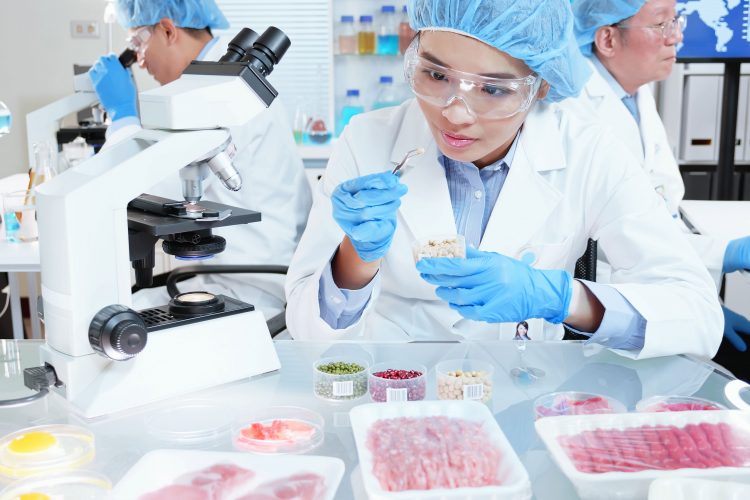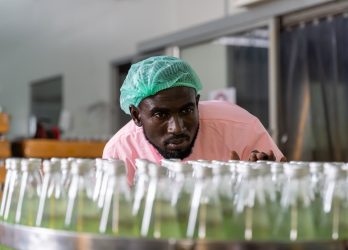What is food safety culture?
- Like
- Digg
- Del
- Tumblr
- VKontakte
- Buffer
- Love This
- Odnoklassniki
- Meneame
- Blogger
- Amazon
- Yahoo Mail
- Gmail
- AOL
- Newsvine
- HackerNews
- Evernote
- MySpace
- Mail.ru
- Viadeo
- Line
- Comments
- Yummly
- SMS
- Viber
- Telegram
- Subscribe
- Skype
- Facebook Messenger
- Kakao
- LiveJournal
- Yammer
- Edgar
- Fintel
- Mix
- Instapaper
- Copy Link
Posted: 19 April 2021 | Bethan Grylls (New Food) | 1 comment
Do you know what food safety culture really means? Bethan Grylls, Editor of New Food asks several experts for their definition.


Each year one in 10 people worldwide becomes ill due to contaminated food – 420,000 of whom die.1
With the complexity of our global supply chains, it’s now more important than ever to engender a culture that promotes and improves food safety. This requires a harmonised approach, whereby all actors in the chain communicate and collaborate. Key decisions that influence the integrity of our food are made in each link of the chain and, as such, the culture of every organisation involved in that chain impacts the end-product; essentially determining whether the food we eat is safe.
The concept of food safety culture isn’t new and was initially promoted by the US Food and Drug Administration’s (FDA) Frank Yiannas.2 Although it’s not stipulated directly within the Food Safety Modernization Act (FSMA), the Act does advocate preventative control measures – a pillar of food safety culture. But it was only recently that we saw it truly taking the spotlight in the EU and UK. Firstly, with a 2020 revision made to the General Principles of Food Hygiene of the Codex Alimentarius3 and secondly, with its recent addition into Regulation (EC) No 852/2004.4
All BRCGS accredited food manufacturing sites are audited against food safety culture now.
Someone recently said to me that the idea of food safety culture was unclear, so for the sake of offering clarity to those still pondering its meaning, I asked several of the New Food Advisory Board members what it meant to them.
Defining food safety culture
“When issue 8 of the BRCGS Global Food Safety Standard was proposed several years ago, it introduced the principle [of food safety culture], so we had preparation and transition time,” Gideon Ashworth, Head of Food Defence at Bart Ingredients, explained. “The first year the auditors did not raise non-conformances, they were acting as ‘guides’ and looking to better understand where we, as an industry, were with the quite large implementation change.
“It [issue 8] does lay out a guide within the clauses as to the expectations of a site,” he continued, “however, it allows the site a degree of interpretation in a way that suits, rather than a prescriptive set of requirements.”
Ashworth added that the audit standards outline that the culture should stem from senior management.
“The landscape of food safety has gone through a seismic shift, where principles of behavioural science now blend seamlessly with food science and technology, and success is also measured through behavioural consistency, organisational culture and team dynamics,” Sterling Crew, Chair of The Food Authenticity Network’s Advisory Board, told me.


In other words, implementing a food safety culture into your business is not the tricky part, but rather creating an environment in which your culture is efficient and relevant.
“It will require time and persistence. For some companies, the gap will be bigger than others,” François Bourdichon, Food Safety Microbiologist and Chair of the Standing Committee on Microbiological Hygiene, International Dairy Federation, informed me.
“The problem is that many consultants will promote a one-size-fits-all approach,” Bourdichon continued, “but that didn’t work for Hazard Analysis and Critical Control Point (HACCP) or Hazard Analysis and Risk-Based Preventive Controls (HARPC), and it won’t for food safety culture – although certification bodies will be happy.”
Traditionally, we have depended on systems that only identify an issue after they become a problem. Although audits and testing must remain a necessary part of the food production process, businesses should – if they have not already – move to preventative methods. Successful companies are those which review their methods and infrastructure on a continuous basis, identifying potential hazards and risks before they occur.


Food Safety culture is something that all BRCGS accredited food manufacturing sites are audited against
“I consider food safety culture as the way a team behaves when no one is watching,” Jaclyn Bowen, Executive Director of Clean Label Project, said. “You can assess food safety culture in how a brand or manufacturing facility responds to regular issues or non‑compliances that occur during routine business – the sense of urgency.”
“It’s about every person working inside a company to understand why food safety is important; everyone has a personal responsibility to understand and ensure that all foods are produced to the highest standards of safety,” added food fraud expert, Professor Chris Elliott of Queen’s University Belfast.
For me, food safety culture is more than ticking boxes, it’s going above and beyond. It’s all for one and one for all.
If you’d like to find out more about food safety culture, you can read about it in our latest issue (#2 2021) of New Food. We also have an excellent line up of speakers discussing this topic at the upcoming Food Integrity conference; for more information on this session or the five-day programme, and to book tickets visit: www.foodintegrityevent.com.
Issue
Related topics
Food Fraud, Food Safety, Recruitment & workforce, Regulation & Legislation, Supply chain, Traceability
Related organisations
Bart Ingredients, Clean Label Project, Food and Drug Administration (FDA), International Dairy Federation, Queen's University Belfast, The Food Authenticity Network
Related people
Chris Elliott, François Bourdichon, Frank Yiannas, Gideon Ashworth, Jaclyn Bowen, Sterling Crew










Very good copy, I learnt a lot from it. Thank you.